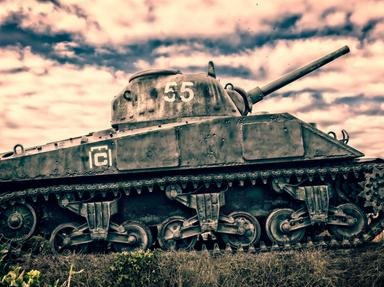Quiz Answer Key and Fun Facts
1. There were two versions of the famous PzKpfW VI - the Tiger and Königstiger. Did they have the same gun?
2. The "Marder" series was a series of self propelled guns on various chassis. Chassis from what country were NOT adapted into a Marder vehicle?
3. How can the MG34/MG42 machine guns best be classified?
4. The latest PzKpfW IV model was the Ausf. J. What were the noteworthy changes compared to the previous model, Ausf. H?
5. What was the gun installed in the turret of the latest model of the PzKpfW III?
6. The Battle of Kursk saw the debut of the heavy "Ferdinand" tank destroyer, but the vehicle was not a success. Which of the following aspects did NOT contribute to its failure?
7. The Spanish Civil War (1936-1939) was used by Germany to test out some of its new weaponry. Which of the following aircraft was NOT deployed in Spain during this conflict?
8. Jagdpanzers (tank destroyers) were self-propelled AT guns in a well armored, enclosed vehicle, based on an existing chassis. On what chassis was the Jagdpanzer "Hetzer" based?
9. What was the first German aircraft carrier called?
10. And to finish with same vehicle as in the start of the quiz - why was the turret of the Königstiger changed after 50 copies were produced?
Source: Author
Leuber
This quiz was reviewed by FunTrivia editor
ponycargirl before going online.
Any errors found in FunTrivia content are routinely corrected through our feedback system.
